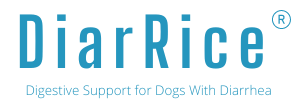What Are Signs of Dehydration in Dogs? Identifying Critical Symptoms

Noticing the signs of dehydration in your dog is crucial for their health and well-being. Dehydration in dogs can manifest in various ways, and it’s important for you as a pet owner to be vigilant about these symptoms. Dehydration occurs when the body loses more fluids than it takes in, and in dogs, it can result from several causes, including excessive panting, vomiting, fever, or insufficient water intake. The early recognition of the signs can prevent serious health issues and ensure your dog stays healthy and hydrated.
Signs that indicate a dog is dehydrated include lethargy, loss of appetite, dry gums that don’t snap back when pressed, skin tenting, fast heart rate, fever, weakness, sunken eyes, excessive or rapid breathing, and in severe cases – collapse.
Some signs of dehydration in dogs are lethargy, dry gums, and losing skin elasticity. Your dog’s eyes may appear sunken, or you may notice that their nose is dry. When dehydration is suspected, a simple test such as gently lifting the skin on the back of your dog’s neck can be telling—if the skin doesn’t return to its normal position quickly, this may indicate dehydration. However, these are just a few indicators, and it’s critical to understand that dehydration can rapidly escalate to a life-threatening condition, so prompt attention is vital.
Key Takeaways
- Be aware of dehydration symptoms like dry gums and skin elasticity loss.
- Perform a skin lift test to gauge hydration.
- Seek immediate veterinary care if dehydration is suspected.
Recognizing Dehydration in Dogs
Quickly identifying signs of dehydration can be vital for your dog’s health. Familiarize yourself with the physical and behavioral changes dehydration may cause.
Physical Symptoms of Dehydration
Gums: Healthy gums appear shiny and moist. Dehydration often results in sticky gums or pale gums and increases capillary refill time. Press gently on your dog’s gums; the color should return instantly. Delayed color return indicates a problem.
Skin Elasticity: Pinch the skin gently between your dog’s shoulder blades. It should snap back into place immediately. If the skin stays tented or is slow to return to its original position, your dog may be dehydrated.
Nose and Eyes: A dry nose can be a sign of dehydration, though it’s not definitive on its own. Sunken eyes are a more reliable indicator of severe fluid loss.
Saliva: Expect to see clear and watery saliva in a well-hydrated dog. With dehydration, the saliva may become noticeably thick.
Behavioral Indicators
Panting and Appetite: While panting can be normal, excessive panting without recent exercise or heat exposure could signal dehydration. Alongside this, watch for a loss of appetite; a dog that turns down favorite foods may be feeling unwell.
General Behavior: Any alterations in energy levels or restlessness may also indicate dehydration. Look for unusual lethargy or a dog that is less responsive than normal, as these are often overlooked signs of dehydration in dogs.
Causes and Risk Factors
Understanding what contributes to dehydration in dogs allows you to prevent and quickly address this potentially serious issue. Two primary categories encompass the various causes and risk factors: health conditions that impact a dog’s ability to retain water and environmental or lifestyle factors that increase water loss or decrease intake.
Health Conditions
If your dog suffers from conditions like kidney disease or diabetes, they’re at an increased risk of becoming dehydrated. Vomiting and diarrhea are common signs your dog may lose more fluids than usual. Illnesses that cause fever can also lead to dehydration, just as cancer could affect your dog’s overall health and hydration levels.
Environmental and Lifestyle Factors
Your dog’s daily environment plays a significant role in hydration. Situations of high temperatures or vigorous exercise can lead to heat exhaustion, escalating the risk of dehydration. Older dogs are particularly vulnerable and should be watched carefully when temperatures climb or after intense physical activity. Regular monitoring during such conditions can prevent dehydration before it becomes a health emergency.
Treatment and Management
When your dog shows signs of dehydration, timely treatment and management are crucial to prevent serious complications such as organ failure. Restore hydration and electrolyte balance to safeguard your dog’s health.
Immediate Actions
First, provide your dog with small amounts of water or an electrolyte solution like Pedialyte to gradually replenish fluids. Ice cubes can also encourage water intake and help prevent further vomiting. If your dog cannot keep water down, avoid food and water for a few hours, then reintroduce it slowly.
Veterinary Interventions
If dehydration persists or your pet’s condition worsens, seek veterinary care immediately for more advanced treatment. Vets may administer intravenous fluids or fluids subcutaneously to rapidly rehydrate your dog. They’ll also conduct blood work to assess the extent of dehydration and any implications on nutrition and organ function. Comprehensive fluid therapy is often necessary to correct the underlying imbalance and support recovery.
Preventing Dehydration in Dogs
Ensuring your dog remains well-hydrated is a vital aspect of maintaining their health, especially given the risks posed by dehydration including potential kidney disease and heat stroke. Practice these preventive steps consistently:
- Provide constant access to clean water. Check that your dog always has fresh and clean water available, and refill bowls with cool water regularly throughout the day.
- Monitor their water intake. Remain alert to how much your dog drinks; changes could indicate health issues or variations in hydration needs due to activity level and weather.
- Balance their nutrition. A well-balanced diet supports overall health and helps maintain proper body fluids. Include wetted food in their diet to increase fluid intake if necessary.
- Avoid excessive heat. Limit your dog’s exposure to extreme heat and provide ample shade and water when they are outside to prevent heat-related dehydration.
- Incorporate hydration in activities:
- During walks, carry water and a portable bowl.
- Offer fluids after play or exercise.
- Educate yourself on dehydration signs using trusted resources such as the AVMA.
Taking proactive steps to prevent dehydration will support your dog’s long-term health and wellness. Remember, you play a key role in keeping your furry friend happy and hydrated.
Frequently Asked Questions
Dehydration in dogs is a serious health condition that requires prompt recognition and treatment. If you notice any of the following symptoms in your dog, it’s important to take immediate steps to address their hydration needs.
What symptoms indicate that a dog might be suffering from severe dehydration?
A dog experiencing severe dehydration may exhibit symptoms such as excessive panting, lethargy, and loss of appetite. Their skin might lose elasticity, making it slow to return to position when gently pinched. Consult with a veterinarian if your dog shows these signs.
How can you effectively treat a dehydrated dog at home?
Rehydrate your dog at home by providing constant access to fresh water. Encourage drinking by offering water from your hand or adding water to their food. If your dog’s dehydration is mild, this may be sufficient, but severe cases require veterinary intervention.
What are the indicators of dehydration in a dog’s eyes and behavior?
Dehydrated dogs often have sunken eyes and a dry or tacky mouth. They may also display a change in behavior, showing signs of depression or irritability.
How quickly can a dog recover from dehydration with proper care?
Recovery time varies, depending on the dehydration severity and treatment response. With proper care, a mildly dehydrated dog can recover quickly, usually within 24 hours. However, those with severe dehydration might require several days and veterinary support to fully recover.
What steps should you take to rehydrate a dog that has been vomiting or has diarrhea?
For a dog with vomiting or diarrhea, you should provide small amounts of water frequently to prevent further stomach upset. If these symptoms persist, consult your veterinarian as this can be a sign of other underlying health issues.
Is it possible for dehydration in dogs to lead to fatal outcomes, and how can it be prevented?
Yes, dehydration in dogs, when left untreated, can escalate to life-threatening conditions. Prevent this by ensuring your dog has continuous access to clean water and monitoring their intake, especially during hot weather, illness, or increased exercise. Regularly check for signs of dehydration, and visit your vet promptly if you’re concerned.
